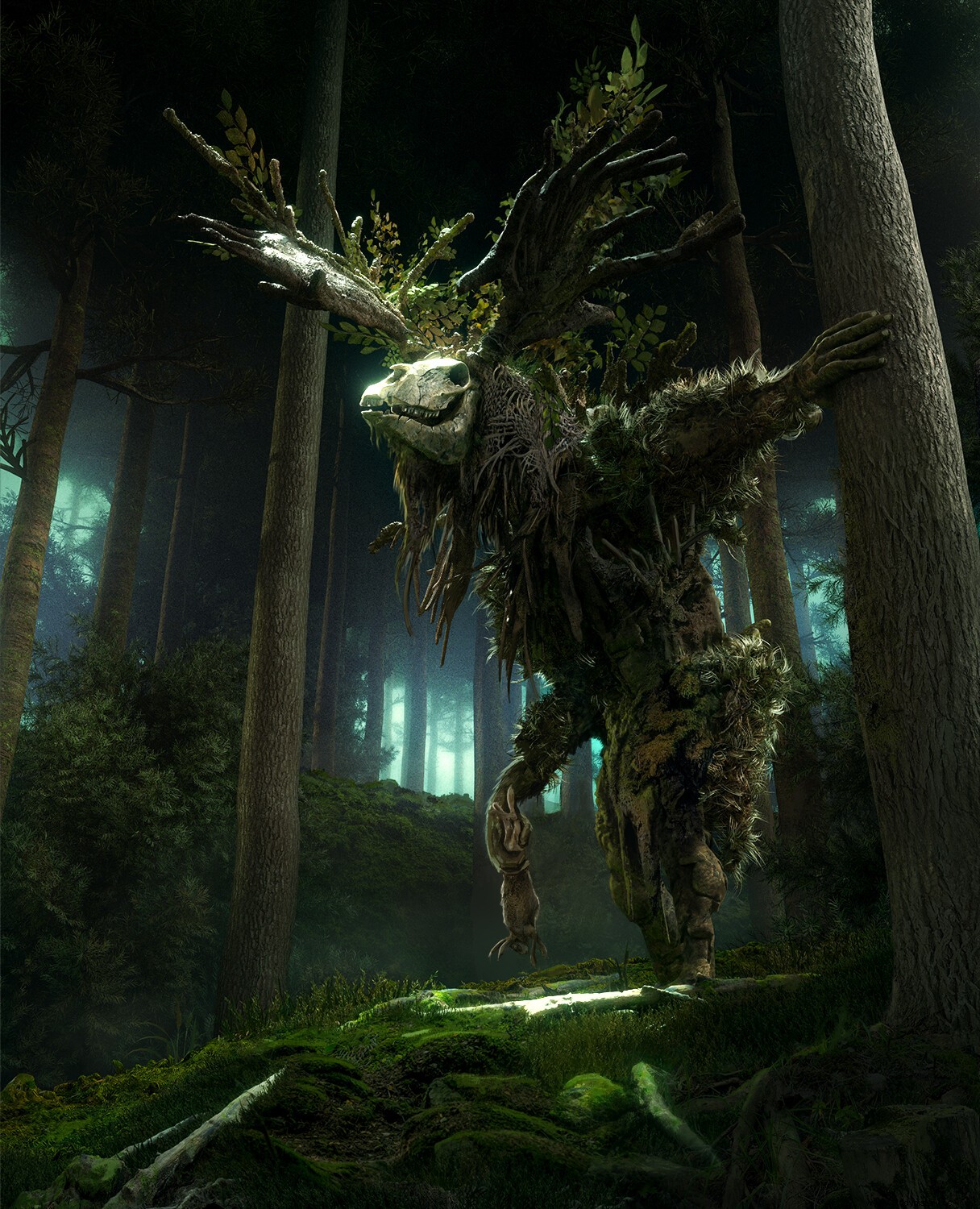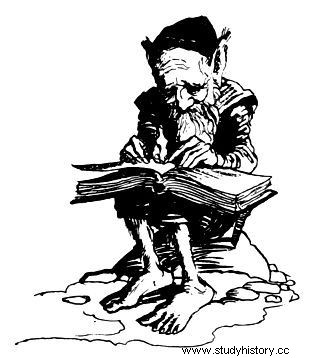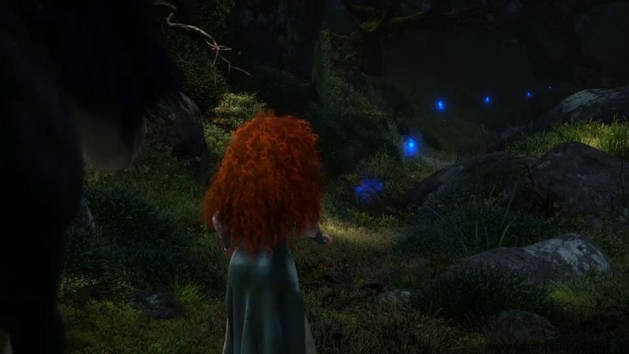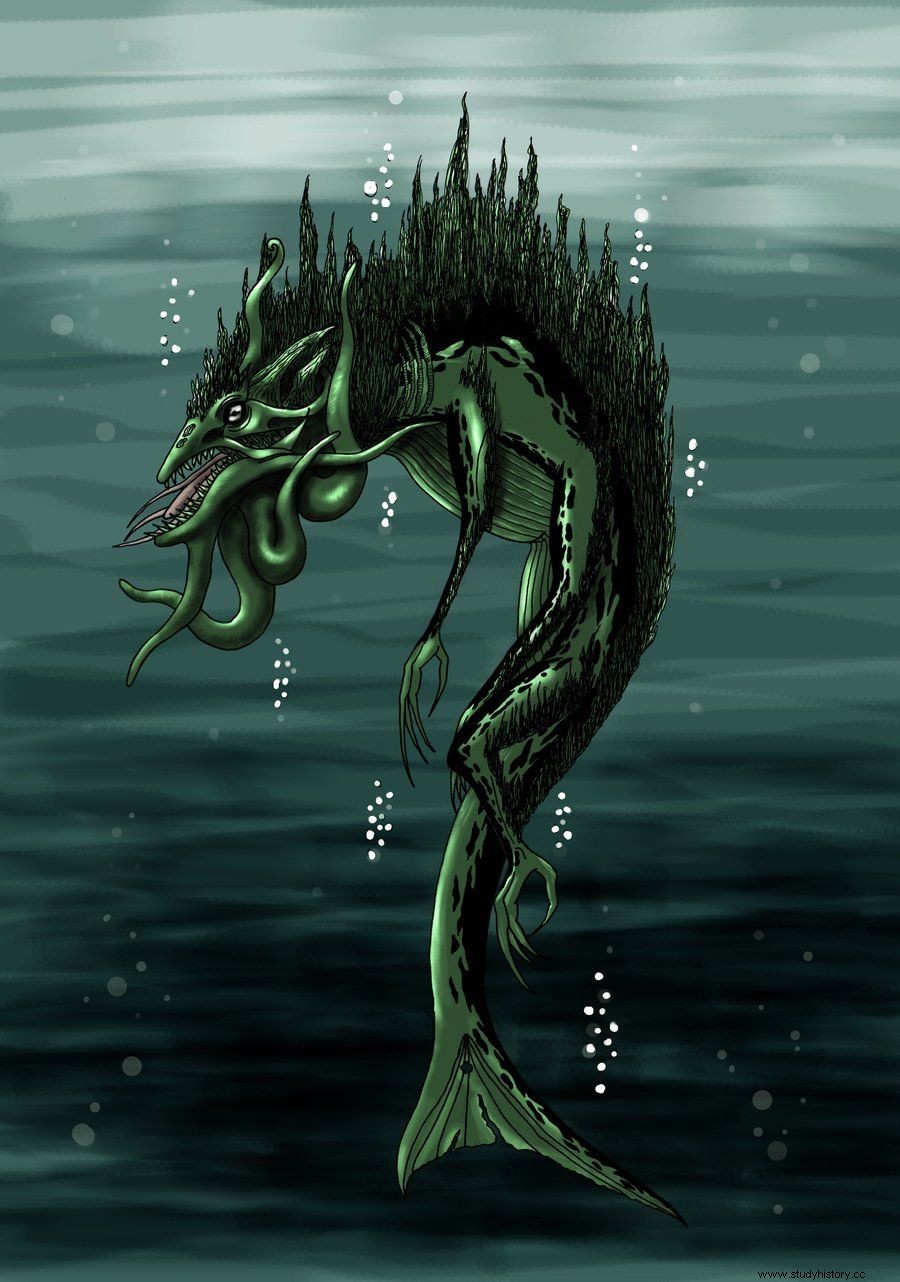Myths, legends, folklore and fantastic stories are always exciting to us, regardless of geographical location. Each country has its own collection of mythical creatures, legendary human figures and monsters. Finnish folklore and legends are no exception. The dense forests and lakes have served as an inspiration for human birth, fascinating stories, where many amazing creatures star. And like everyone else, there is good and evil.
At the same time as Finland underwent a period of rapid urbanization during the twentieth century, myths and legends remain an important part of the country's culture. Many of these creatures are included in the poems of the Kalevala (the national folk pose collected by Elias Lonnrot in 19 th century). Today, children in Finland are familiar with the dewatered versions of old legends through modern children's books and television programs.
Hiisi
Originally, Hiisi were spirits in the forests among the hills. In folk songs in Finland, the term Hiisi is often used in connection with a mountain, hill or some forest animal. As a creature, they were considered rulers or owners of the same. They are considered to be the autochthonous, pagan inhabitants of the country, like mythical giants. Hiisi is found near ominous cracks, prominent headlands, hills, forests, large boulders, potholes and other rugged terrain. Recent Finnish folklore associates Hiisi mainly with burial sites or sacred sites associated with burial sites.

I 12 th and 13 th For centuries, Finland underwent Christianity. Therefore, folklore was also influenced by Christian ideas. As a result, Hiisi was portrayed as something demonic or as a deception-like entity. Over time, the evil nature of these spirits has become exaggerated.
According to Finnish folklore, strange rock formations were formed by Hiisi. Much of the knowledge about Hiisi came from the village of Narva in Vesilahti, Finland. There are fantastic stories about pots full of coins that are caught by fishermen as they roll down the cliff at Hiidennokka. Other stories tell how the Hiidennokka mantle was formed when giants threw stones. According to the Christian point of view, these evil giants threw stones into the sea to prevent people from going to church by boat.
Later, the good nature of Hiisi was diminished. They were seen as purely evil creatures. According to legend, Hiisi travels in a noisy procession. They would attack anyone who did not make room for them. The Finnish people claim that if someone left the door open, Hiisi could come in and steal anything. To escape being chased by Hiisi, one should seek refuge in a cultivated area. According to folklore, cultivated lands were blessed by pagan deities, and therefore Hiisi could not enter them.
Haltija
A haltija, in Finnish folklore, is a gnome, spirit or elf-like creature who helps, guards or protects someone or something. The term 'haltija' possibly has its roots in the Gothic 'haltijar'. Other possibilities include the Finnish verb, 'hallita', which means 'to command', 'to rule' or 'to master'. In modern Finnish, the word takes on different meanings according to the context. Word meanings include master, lord, resident, occupier, proprietor, possessor or owner.

According to Finnish folklore, haltijas are of various kinds. For example, there are forest stops and water stops. Even cemeteries, cemeteries and settlements have their own haltijas. One type is maan haltija (land sspirit) or tonttu. Another is the homemaker or Santa Claus known as Koti haltija, who lives in every house. The Finnish people believe that Koti haltija guards and takes care of the house, so he must be treated with respect. Another elf is sauna tonttu, who lives in the sauna and guards over it. It ensures that people do not behave incorrectly in it. The Christmas river is known as Joulu tonttu. There are also personal haltijas or protective spirits similar to the angels of Christianity.
Will-o'-the-wisp
In folklore in most countries, willpower is a common phenomenon. It is an atmospheric ghostly light detected by travelers at night, especially over bogs, marshes or bogs. In English folklore, will-o'-the-wisp is known by a number of names, such as friar's lantern, jack-o'-lantern and hobby lantern. The light is said to mislead travelers by resembling a flickering lantern or lamp. In the literature, a will-to-whisper metaphorically refers to a goal, hope, or dream that leads one on. But this goal can either be impossible to achieve or be something strange or scary.

The Wills-o'-the-wisp feature of folk tales and legends in many countries and cultures. Most countries attribute to them fairies, elemental spirits, and ghosts. According to modern science, however, these lights are nothing but bioluminescence caused by oxidation of methane, phosphine and diphosphane caused by organic decay.
Swedes, Estonians, Latvians, Danes, Irish, Lithuanians and Finns believe that a will-o'-the-wisp marks the location of a treasure deep under water or in the ground. The treasure can only be reached when the light is present. Many people believe that magic tricks or even a dead man's hand were needed to find the treasure. In Finland, people believed that early autumn was the ideal time to look for these lights and treasures. It was believed that whoever hid the treasure underground or water, made the treasure available only during St. John's Day. A will-o'-the-wisp was set to mark the exact place and time so they could come back and locate the treasure.
Iku-Turso
Iku-Turso is an evil monster in Finnish folk tales, believed to live in the sea. The exact physical description of Iku-Turso is still unclear, but locals describe him with several epithets. Iku-Turso is also called partalainen (the one who lives on the edge, or the bearded one), tuhatsarvi (thousand-horned), Tuonen härkä (bull of Tuoni, death) or tuhatpää (thousand-headed). Some locals claim that he lived in Pohjola (a mythical land in Finnish folktales), but that may be simply because Pohjola was perceived as housing all kinds of evil.

The descriptions attributed to Iku-Turso vary. In some versions of the myth, the Iku-Turso resembles a huge, violent squid with huge tentacles and sucks. Other versions claim that he has wings like one of a dragon. Many claim that he resembles the Loch Ness monster. Iku-Turso has also been compared to some other ancient creatures, such as Jörmungandr from Norse mythology and Leviathan from the Abrahamic faith. 'Tursas', the Finnish word for squid, also comes from Iku-Turso.
Menninkäinen

According to Finnish folklore, a menninkäinen is a leprechaun-like creature that lives in the forests. Early adventures portray them as giving people services. The original version of the story depicts the menninkäinen as the spirits of the dead. But as generations passed, the stories changed over time and the creatures were portrayed as something else. In modern times the word is usually used to denote elves, elves and hobgoblins. Over time, the word may have meant slightly different things, since not all Finnish words have an English equivalent.
Goblins or leprechauns in Finnish folklore resemble a eerie resemblance to those in Tolkien's Hobbits. Menninkäinen are described as dwarf-like humanoids who wear pointed hats, like riddles and dances, live underground and seek out treasures. They are shy and avoid encountering people, but sometimes they get away from human settlements out of curiosity. If they are lured carefully, these creatures can be quite friendly. However, some locals believe that they are misogynists who trick children into walking in the middle of the forest.
Nixie
Nixie (or Finnish, 'näkki') are human-like water spirits that have the ability to form. In Finnish stories, Nixie has no specific shape, since shape change is one of their central characteristics. Nixien could transform into an old man, dressed in elegant clothes, playing the violin near a stream or waterfall. They may just as well be other objects such as shiny treasures, various floating objects or animals (the most common form was the 'brook horse').

According to some versions of folklore, Nixie played enchanted songs on the violin to attract women and children to drown in streams and lakes. Other versions show that men were also lured to death. However, not all spirits are so evil. Many stories show that Nixie was completely harmless to the audience. In other stories, people fall in love with Nixie, but many of the stories end with the mythical creatures returning to their homes. This will usually be a stream or waterfall. It is said that unless these spirits are free and have regular contact with a body of water, they will grow into despair. In the Norwegian version, Nixie, if approached carefully, will teach musicians to play so skillfully that the trees would dance and waterfalls would stop.
The enchanting music that Nixie plays is considered more dangerous for women and children, especially pregnant and unbaptized children. Nixien was believed to be most active on Christmas Eve, during Midsummer Night and on Thursdays. However, this is only a version. Many of the versions came after Christianity in Finland.
Other versions
These spirits are not only popular in Finnish folklore, but also in Germanic, Scandinavian and much other folklore. Their names, shapes and genders vary according to the different geographical locations.
In the English version, Nixie is generally known as a 'knucker' and is depicted in the form of a dragon. Nixie's Scandinavian counterpart was a man, while the German Nixie was a mermaid living in the river. In other parts of Europe, Nixie is known by other names, such as Melusine in France and in Slavic countries, as Slavic water spirits.
In the modern Scandinavian version, Nixie is depicted as a river horse. They would transform into attractive young men from time to time. They were attributed to a more malevolent nature- they would try to carry people away. But calling their name would lead to their death, so they can be defeated. Another belief is that if someone had with Nixie three drops of blood, a black animal and some Scandinavian vodka, Nixie would teach the person to play music.
Some say that seeing Nixie was a bad sign and a drowning accident would follow. He would howl from a certain place in the river or lake, which would be cursed. A fatal accident would follow later on the scene. Swimmers believe they can protect themselves by throwing some steel into the river.
Otso
According to Finnish legend, Otso (also known as Kontio, Ohto, metsän kuningas, meaning king of the forest and mesikämmen) was the spirit of the bear. In general, this spirit was considered friendly and more like a forest cousin.

According to some versions of the story, Otso was a man who fled from the settlements and into the forest. The power of the forest then transmogrified him into a bear. The natives considered killing a bear without proper rituals as a crime. If a bear had to be killed, a sacred ritual by Peijainen had to be performed. Peijaiset is a Finnish faith that dates back to pre-Christian times. It was a memorial service held to honor an animal that was killed, especially a bear. The bear's skull will be kept in a sacred clearing since the skull is said to house the spirit of the beast. People would bring gifts as a tribute to the bear.
Mielikki
Of the large number of forest spirits in Finnish folklore, Mielikki is another. Mielikki is the wife of the most important forest spirit, Tapio. In various other versions, she is referred to as Tapio's daughter-in-law and the spirit that created the bear. It is said that when a hunter first enters the forest, he must offer something to please the spirits. Some say that the hunter must make a golden sacrifice to do so.

According to legend, Mielikki and Tapio have a house full of spirits that are responsible for taking care of the plants and trees. These smaller spirits also help the hunter to lure his prey and lure it to him.
In the Kalevala, it is said that a hero named Lemminkäinen offers Mielikki and Tapeo gold, silver and beans so that he can capture Hiisi. In another passage in the epic, Mielikki is asked to protect the cattle grazing in the forest. Since the forest provided the settlements with food through grazing, hunting and gathering, it was important to stay on the good side of the spirits. Those who hunt game and gather berries and mushrooms pray their prayers.
Mielikki also heals the paws of animals injured by hunters' traps. She helps birds that have fallen out of the nest. She is also knowledgeable about the medicinal herbs in the forest. It is said that if people prayed to her and asked for help, she would do it.
The conclusion
Finnish folklore abounds in spirits, goblins and elf-like creatures. As with folklore in any country, Finnish folklore was told orally. As each generation passed, the stories told orally changed. Furthermore, Christianity in Finland did more than its part in changing the original version of folklore. Today, there is folklore that was born of several generations of storytelling.
